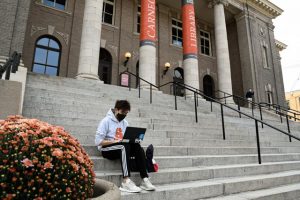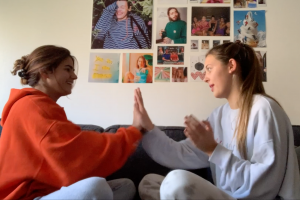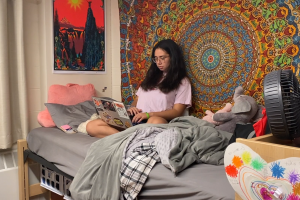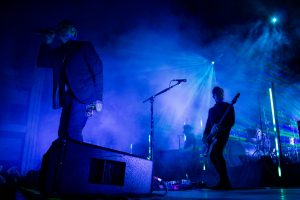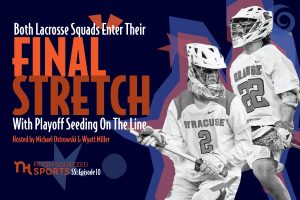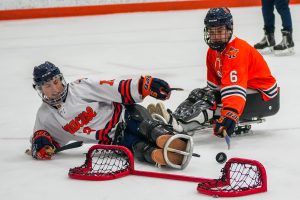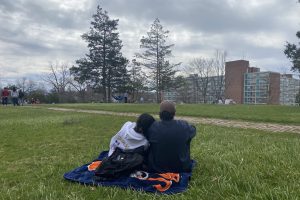Whirlwind fall semester finally comes to a close
Whirlwind fall semester comes to a close
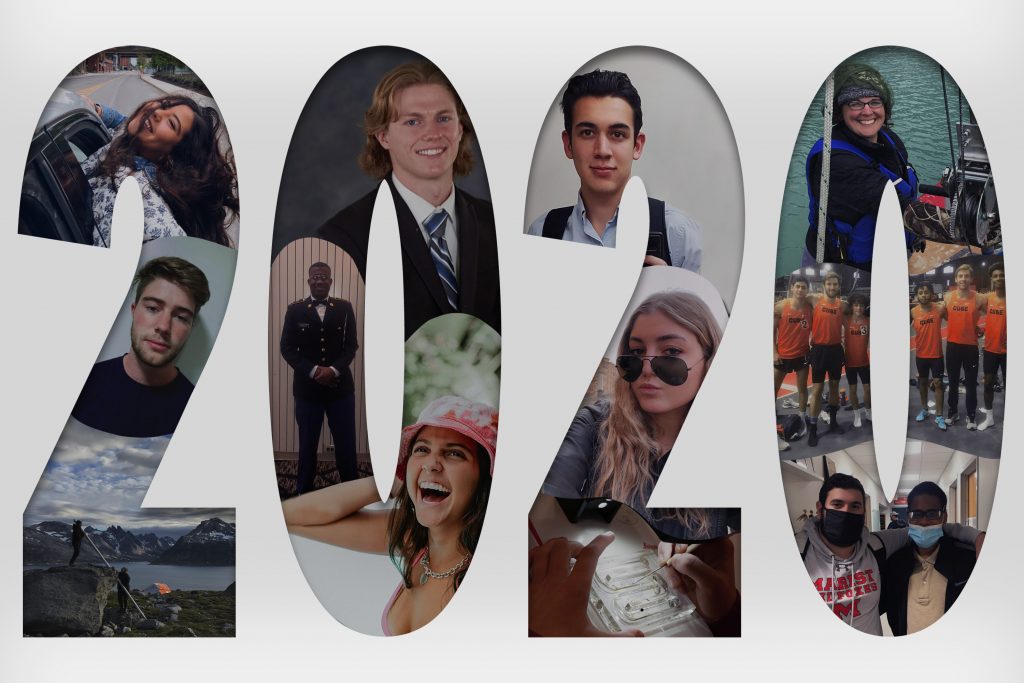
More than 20,000 students arrived on the Syracuse University campus in August to start a semester in the midst of a global pandemic.
Some came hoping for a typical college experience — games at the Dome, pizza at Varsity, the freedom of not living at home — while others were forced into quarantine immediately and wondered if they’d ever have anything resembling a typical semester.
Three months and nearly 500 student COVID cases later, a semester unlike any in the school’s 150-year history is coming to a close. We’re using the occasion to ask students and faculty what the fall has been like for them, what expectations they came with in August, and how their actual experience has differed.
We’ve asked each person to describe for us, in their own words, a specific incident they see as illustrative of their semester. Here are their stories.
A fragile dance
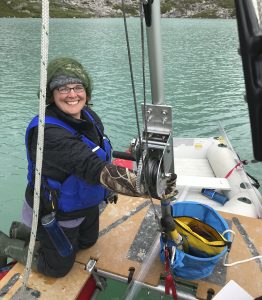 Melissa Chipman sits at the counter, looking through a microscope at a small fragment of Arctic sediment. She hears the mumbling of graduate students, soft behind their masks, six feet away examining their own sediments.
Melissa Chipman sits at the counter, looking through a microscope at a small fragment of Arctic sediment. She hears the mumbling of graduate students, soft behind their masks, six feet away examining their own sediments.
One calls her over, rolling back as far as possible to allow Chipman the six feet of social distance she needs, a difficult task in the cramped lab. Chipman wipes down the student’s microscope with a sanitizing wipe before taking a look at the sediment sample herself. Chipman, an assistant professor specializing in arctic paleoecology & paleoclimatology, advises the student. Then the “delicate dance,” as she calls it, unfolds in reverse as both maneuver back to their own microscopes.
Before COVID, Chipman’s research took her and her students to the far reaches of the Arctic Circle. Now, it’s difficult enough just to get into the lab to quickly check some samples.
This is what research looks like at the Chipman Paleoecology Lab as COVID-19 rages at the end of the Fall 2020 semester. Wheels and desks scrape against the linoleum floors as masked students shuffle out of each other’s way, careful not to contaminate their samples — or themselves.
— Angelina Manganese
Hands-on learner struggles from home
Jimmy Beck arrived at Syracuse University for his sophomore year determined to have as normal a semester as possible despite COVID-19.
He was excited to live in his fraternity house, Delta Kappa Epsilon — to students on campus, it is known as DKE, within steps of friends he made the previous semester. Even with COVID-19 restrictions, Beck figured college would be better than his quarantine at home in Santa Monica, California. He was focused on “keeping himself and his peers safe” so as not to mess that up.
Beck was playing volleyball in the front yard of his frat house, for instance — that beats being at home any day. He leaps up, smacks the ball, and feels the pain in his foot shooting up to his knee as he lands awkwardly. The doctor confirms his fears: a torn meniscus.
On Sept. 14, Beck was on a flight to Los Angeles, heading home for surgery and months of rehab. He tried to commit himself to his studies, but it was hard and he soon withdrew from three of his five classes.
“I could not keep up,” he said. “I am a hands-on learner, and I need to go to class to get the best sense of the material. It was also hard to attend classes with the time difference.”
Beck underwent surgery later in September, and on Nov. 21, his doctor cleared him to come back to school. But of course, on-campus instruction had already been cut short, so Beck must wait longer before rejoining his friends in Syracuse this spring.
He plans to move back into his fraternity house, but avoid volleyball.
— Ava Leventhal
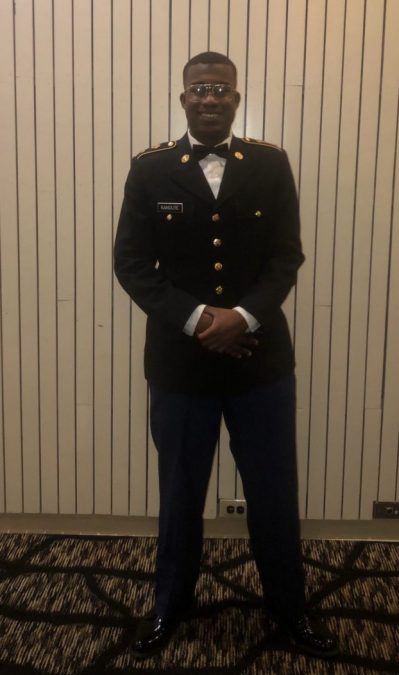
First-generation college student hopes parents can watch him graduate
Minchailou Kanoute woke up early and walked outside into a balmy August morning. He got in his new silver Toyota that still had that” new car” smell and drove to campus for his first ROTC meeting of the year.
A senior majoring in modern American history, Kanoute was hopeful for a full semester of on-campus, in-person instruction. He had missed bonding with his fellow ROTC cadets when the university went all-digital in March.
But soon after he walked in the room and saw his friends and fellow cadets for the first time in months, his lieutenant colonel made it clear that there was no guarantee the semester wouldn’t be cut short again and that they should all prepare for going online.
What would that mean for training? Kanoute and his fellow cadets wanted to know. But the lieutenant colonel had no more answers than anyone else at the university.
Kanoute is thankfully SU managed to keep the campus open for most of the semester. He hopes he can be back in the spring, especially for graduation.
“The ceremonies are mainly just for my parents,” Kanoute said. “My parents did not go to college and my father is an African immigrant so I know for him, seeing his son graduate from an American university, actually being able to sit there throughout the ceremony and all the other stuff, will be him achieving success knowing that he did a good job.”
— Skylar Swart
Silence from the stands
Ryan Jermyn lined up at the start for his first race this fall. Something just felt off, and he had to remind himself this was a competition and not practice.
No applause, no crazy fans yelling, no Otto — just silence.
Jermyn, a sophomore who runs the 800-meter and 4×400-meter relay for SU’s men’s track and field team, said the campus was an entirely different place this past semester. Without fans cheering on the Orange, the sense of school spirit hasn’t been the same.
“It was truly disappointing not having fans this past semester,” Jermyn said. “It really took the energy out of the entire campus.”
— Cameron French
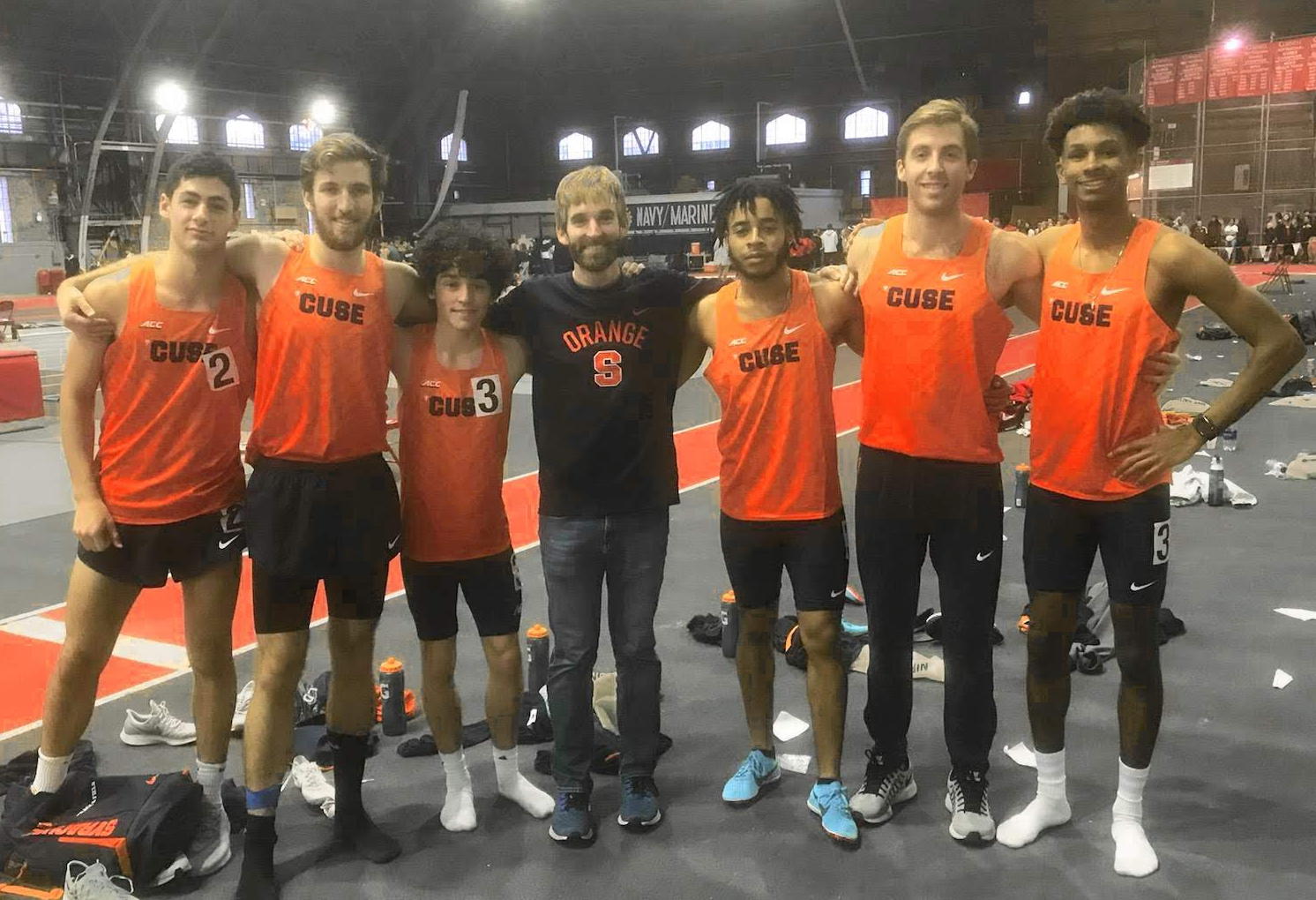
All work and no play in quarantine
The window only opens a crack, just enough for Emma Herdler to stick one of her hands outside.
The fresh air feels good. But the VPA student next door who kept her up all night continues singing the same song she started belting out at midnight. It’s now noon.
She’s hungry, but the burger just left at her door — no thanks, she thinks to herself, starvation is better than food poisoning. But she can’t leave her room.
She may have been infected by COVID and she’s been ordered, on threat of suspension from the university, to quarantine for 14 days at the Sheraton Hotel.
“It was absolutely horrible in there,” Herdler said. “I fear for people with mental illness who are placed in there because it gets lonely.”
And Herdler, a sophomore studying psychology, had to keep up in her classes.
“The stress of school never stops,” she said. “I did not get fresh air for two weeks and I could tell that it was affecting my performance in the classroom.”
— Jacob Halperin
Cuse with friends better than home in the Sunshine State
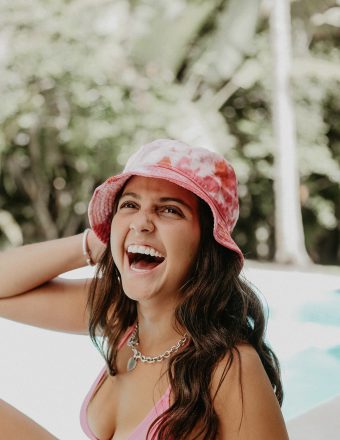 It’s Aug. 24, the first day of classes at Syracuse University. Sophomore Jenna Bondy grabs her sunglasses, flip-flops and MacBook Pro.
It’s Aug. 24, the first day of classes at Syracuse University. Sophomore Jenna Bondy grabs her sunglasses, flip-flops and MacBook Pro.
She’s ready for Day 1 of fall semester, despite being 1,500 miles south of Syracuse. At 10:35 a.m., she joins the information technology class from her patio in Miami, ready to introduce herself to her new classmates.
Bondy opted for a fully digital semester from home rather than quarantining in Syracuse. Bondy said she didn’t think Syracuse would be able to keep its campus open for as long as it did and thought SU would send students home within two weeks of opening.
So she thought the smart move was to stay in Florida, a state that at the time was high on the list of states New York had imposed travel restrictions against.
Bondy enrolled in 17 credits, all on Zoom. She said that hurt her level of engagement with the classes. She said it was hard to build relationships with professors in the online setting and felt detached from her friends and the university community.
“It was tough for me to see my peers enjoying the fall activities that Upstate New York has to offer all while being so far away from it,” said Bondy, who hopes to return to Syracuse for spring semester. “It was hard a lot of days being so far from my friends.”
— Jane Shevlin
Chance to serve as the campus closes
Freshman Colin Babick had been waiting for this moment the entire semester: the chance to put his Friday and Saturday EMT classes to use during his first shift at Syracuse University Ambulance.
It would also be his last shift, at least for a while. Babick was scheduled to work at SUA on Nov. 13, a few days after the university announced it would transition to all online course delivery earlier than expected. He was scheduled to go home to Connecticut the very next day.
Babick left his suitcases and cardboard boxes behind on the seventh floor of Day Hall as he walked to SUA for his 5 to 10 p.m. shift. He had worked as an emergency medical technician in Connecticut over the summer after receiving his EMT license in June. His colleagues then were 30 or older.
Now working alongside people his own age, he responded to medical calls that evening at various Residence Halls.
When his shift was over, he went back to Day Hall to finish packing.
— Christopher Scarglato
Masks kept student organizations going strong
Matthew Bonaparte is impressed by his fellow SU students and credits their responsible behavior in allowing the university to stay open longer than he thought it would.
“I thought we were going to get shut down really quickly,” the communications and rhetorical studies junior said. “I didn’t really expect a lot of people to wear masks. I expected a lot of cases early on and that really didn’t happen.”
For Bonaparte, the decision students made to follow guidelines and wear masks made the difference.
“Masks everywhere works,” Bonaparte said. “The times where Covid-19 seems to show up are when people don’t follow the guidelines and don’t wear masks.”
Bonaparte is a part of several student organizations and he says that social distancing guidelines, as well as mask use, have made a big difference. Each organization he’s part of that followed guidelines finished the semester relatively unscathed by COVID.
“I’ve seen (masks) in a big way in extracurricular settings,” Bonaparte said. “Nobody I know has transmitted COVID through a student organization.”
But Bonaparte does worry a return to campus for Spring semester might be in jeopardy.
“I’m a little bit worried,” Bonaparte said. “I don’t really know if we’ll end up going back.”
— Jacob Morris
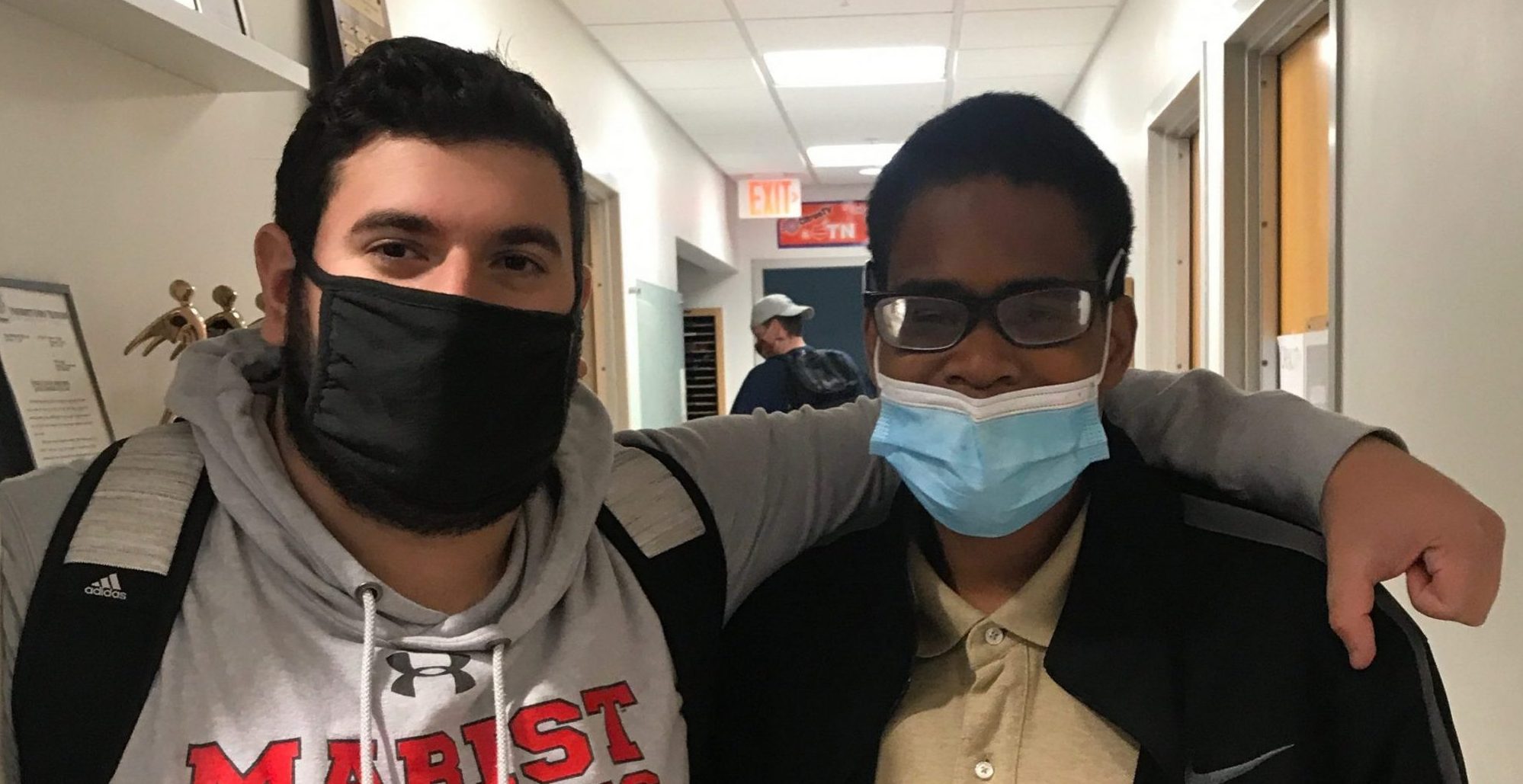
Student wants studio time, not spiders
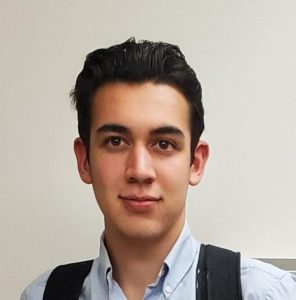 Morning sunlight filters through the blinds as Parker VanderVen wakes up for class. He rolls out of bed and walks through his apartment, keeping a close eye out for spiders. The 19-year-old sophomore’s fear of spiders has grown since he encountered 37-spiders in one day this fall in his one-bedroom suite on Syracuse University’s South Campus.
Morning sunlight filters through the blinds as Parker VanderVen wakes up for class. He rolls out of bed and walks through his apartment, keeping a close eye out for spiders. The 19-year-old sophomore’s fear of spiders has grown since he encountered 37-spiders in one day this fall in his one-bedroom suite on Syracuse University’s South Campus.
He eats breakfast in silence, enjoying the moment before his workday begins, which on this day will mean virtual learning rather than in the School of Architecture’s design studios in Slocum Hall. VanderVen wanted to study on campus this semester rather than from his hometown in Pennsylvania because he was counting on using those spaces.
But he can only use the studios every other week, for one day because of COVID-19 restrictions, and even then only until 7 p.m. So after he finishes breakfast, he returns to his bedroom to Zoom into his first class.
— Celeste McDonald
Not the campus she visited
 When Sydney Weinstein first arrived at Flint Hall in August, she was nervous about her first semester in college.
When Sydney Weinstein first arrived at Flint Hall in August, she was nervous about her first semester in college.
The North Caldwell, New Jersey, native majoring in psychology was eager to begin her freshman year. But the uncertainties of COVID-19 made leaving home to start college just that much more stressful.
Weinstein said she fell in love with SU when she visited campus pre-COVID, finding a university brimming with school spirit.
“I knew one version of Syracuse, and when I came here it was the exact opposite,” she said. “It felt like I was at a completely different school.”
Instead of a campus with boundless opportunities, she felt confined — to her room, where she took most of her classes on Zoom, and to a small group of friends as she found it almost impossible to get to know people from other dorms.
“At a certain point I realized that I needed to start to branch out with people in my dorm,” she said.
But the semester had its bright spots. Sydney and nine of her SU friends, desperate for group fun, booked conjoining hotel rooms together on Halloween for a girl’s weekend.
“We were like we don’t want to have to try and scheme our way together,” she said. “It was for sure the most fun weekend I had all semester.”
— Jack Wells
In the Dome we trust
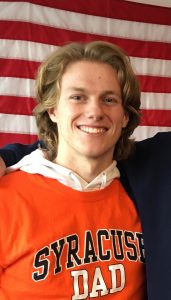
For much of the fall semester, sophomore Daniel Cunningham feared campus would shut down at any moment.
“Every day went by and I would repeatedly think that at some point we were going to get the email that sent us all home, especially in October when our university’s cases were at their peak,” he said. “I was fully expecting to pack up my stuff and head home early.”
Cunningham said the semester ended up exceeding his expectations, with on-campus classes lasting longer than he anticipated. He had some good times with his friends, too, taking walks, going out to dinner and finding other safe ways to get together.
The one big fail for Cunningham: No fans at sporting events.
“I was very disappointed that Syracuse never found a way to get at least a couple of thousand fans in the new Dome,” Cunnigham said. “I feel like when the university saw that in-person classes were going well, they should have thought to open up the Dome to students.”
Still, he thinks the university’s success in the fall bodes well for spring. “After that first semester I think we have a great chance to come back and have more in-person classes, get to go to games and hopefully be able to visit other friends’ dorms,” he said.
And who knows, Cunningham said, perhaps with a vaccine coming soon students will soon be able to go “to Castle Court and have a blast after a big Cuse basketball win.”
— Tim Skeval
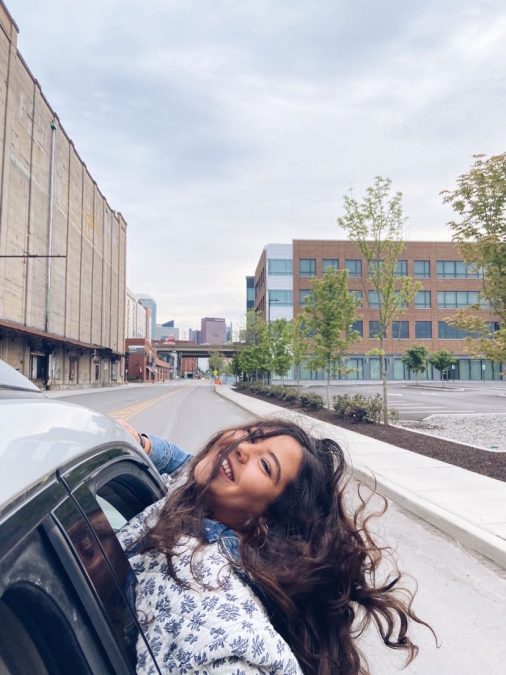
Big moment clouded by COVID
Early afternoon on Sept. 12, Becca Smiga sat in a classroom in SU’s iconic Hall of Languages.
She was wearing a mask and was six feet from the three strangers who were in the room with her, officers with the international medical fraternity, Phi Delta Epsilon.
Smiga, a sophomore public health pre-med student, wanted to join the group. But she couldn’t focus on the interview as she fretted about whether she had COVID-19. She had just received a phone call informing her that she was exposed a few days earlier.
“It was really scary at first,” Smiga said. “I was freaking out. I blew the interview.”
A few days later, she was quarantined in an apartment on South Campus after testing positive.
“My mental health was worse than my physical health,” Smiga said. “I felt like I had a really bad cold, and I did lose my sense of taste and smell for a short while.”
— Dan Wehrle
Dining hall burnout
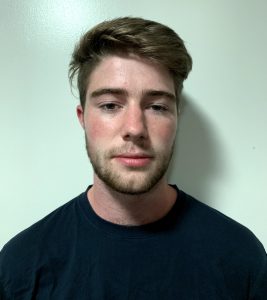
Jack Filkorn can only eat so many melted cheese sandwiches and “western rodeo” burgers before his mind and body begin to rebel.
The business sophomore found that the pandemic sucked much of the joy out of the Fall semester, including the quality of the food he could get with his meal plan.
As a freshman, Filkorn liked both the food and the atmosphere at Ernie Davis. But COVID interrupted dining services at Ernie Davis and Filkorn said he found it inconsistent when it was open. That left Kimmel as Filkorn’s go-to, but there just wasn’t enough variety.
“I was just so sick of eating that food,” he said. “We’d be like ‘well, are we going to Ernie or Kimmel?’ We don’t know if there’s anything at Ernie? And we know exactly what is at Kimmel. I just don’t want any of it.”
But late October, Filkorn said, he had even gotten sick of the quesadillas. So he opted for Dunkin breakfast sandwiches. But still, he missed the social aspect of eating in the dining hall itself.
We would go back and eat in our rooms,” Filkorn said, ”and it would be dark.”
— Timothy Dean

